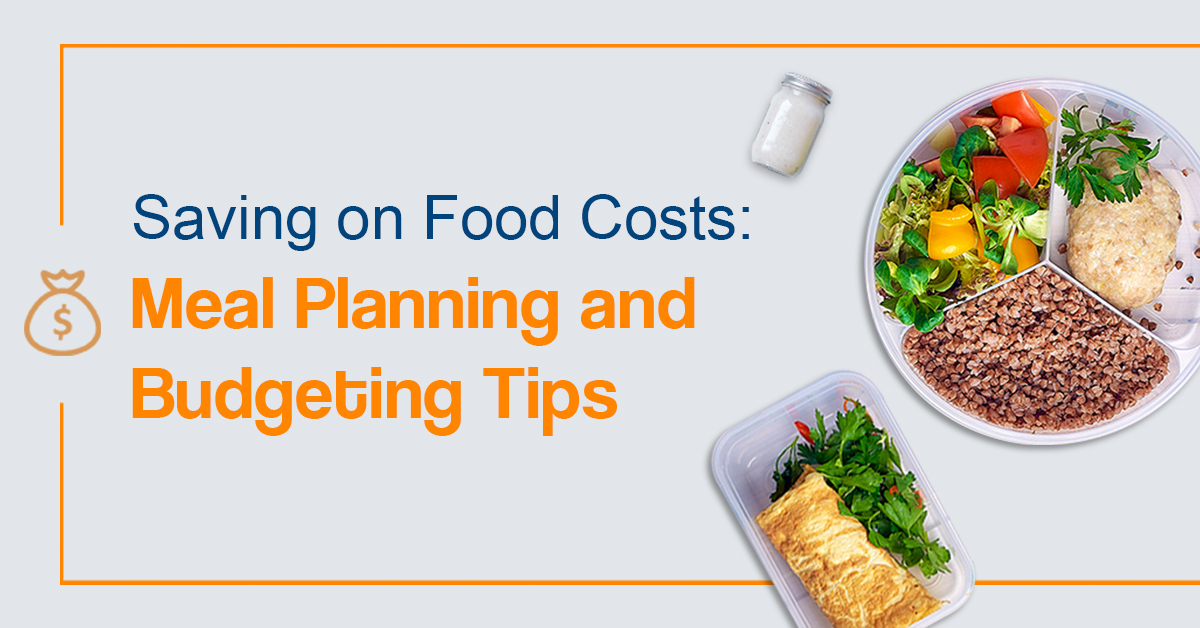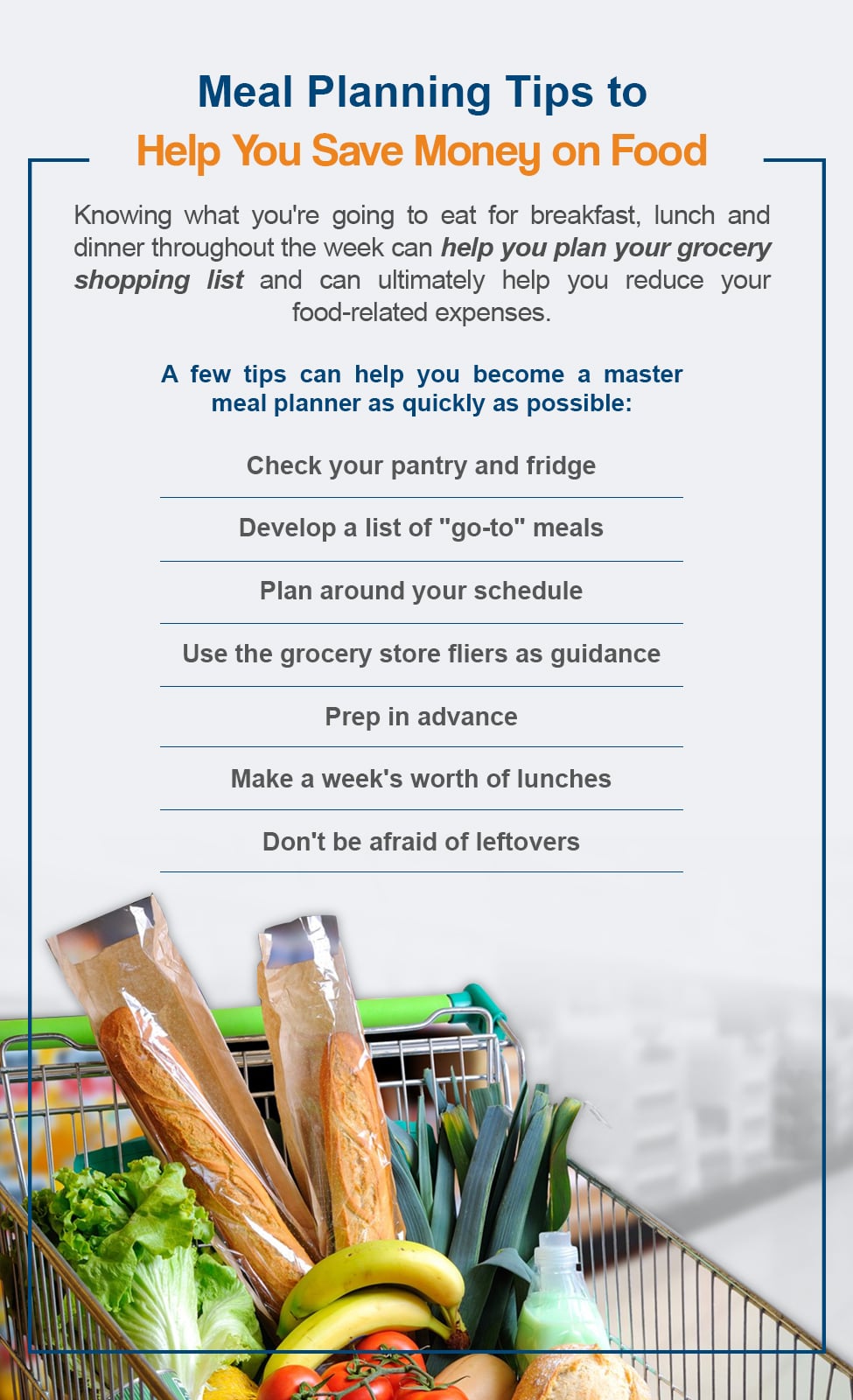
But a meal for two at a fast-food restaurant in the U. Preparing a simple, healthy beef stew or roast chicken with vegetables, for example, can cost a fraction of that and leave you with leftovers as well. Create your shopping list. As you prepare meals throughout the week, make a note of food and supplies you need.
Check your cupboards, refrigerator, and freezer to see what you already have and make a note of any upcoming expiration dates.
Keep a supply of staples. These include such ingredients as olive oil, flour, old-fashioned oats, nuts, seeds, frozen vegetables and fruit, dried herbs and spices, pasta, brown rice, stock cubes, and canned tomatoes, beans, and fish. Find cheap and healthy recipes.
Try to think of foods that are versatile yet nutritious. For example, combining foods in different bowls and creating different sauces and seasonings can add variety and interest to your meals.
Brown rice topped with black beans, corn, salsa, and chili-lime seasoning or sauce creates an inexpensive and easy Mexican dish. An easy switch-up could be to use the same rice, but with edamame, cubed chicken, and soy or stir-fry sauce for a balanced meal with an Asian flare.
Try to eliminate unhealthy foods from your list, such as soda, cookies, crackers, prepackaged meals, and processed foods. These foods are packed with unhealthy ingredients and offer little in the way of nutrition. These junk foods can also often cost you much more than the price on the sticker.
A poor diet can take a toll on your health and lead to increased medical and drug bills as well as reduced energy and productivity. Choose whole foods. Convenience foods can save you time, but will cost you more. For example, buying a block of cheese and slicing or grating it yourself is cheaper than buying processed cheese slices or bags of grated cheese—and helps you avoid additives to prevent caking, etc.
Similarly, buying a head of lettuce and washing and chopping it yourself is cheaper than purchasing bagged salad—and will often stay fresher for longer. Buy frozen fruits and vegetables. Frozen fruits and veggies are just as nutritious as their fresh counterparts and still taste good, but are often less expensive.
They'll also last longer than fresh fruits and vegetables, preventing expensive food waste. If you have freezer room, the largest frozen bags tend to offer the best value.
When you shop at conventional grocery stores, the store or generic brand will often be cheaper than the name brand for the same quality product. Look for simple ways to save money throughout the day. Instead of picking up a morning coffee on your way to work or school, for example, make your coffee at home.
Instead of buying breakfast or lunch, prepare your own using leftovers or home-made salads, sandwiches, or boiled eggs. Buy in bulk. Buying non-perishable items, such as dried beans and canned fish, in bulk can save you money as well as shopping time.
If you have the space, you can store bulk-bought grains and cereals in airtight containers and freeze perishable items, such as meat and bread, in smaller portions to use as needed. Alternatively, you can split them with a friend—saving you both money.
Shop for produce in season and buy by the bag. When produce is in season it is at its cheapest, as well as its tastiest and most nutritious. Look for whole grains. Whole, unprocessed grains such as brown rice, oats, and quinoa are often less expensive than their processed alternatives sugar-laden cereals, white rice, and white bread and contain little to no harmful added sugar and refined flour.
Drink water instead of soda. While organically grown food reduces the potential health and environmental hazards posed by pesticides, genetically modified organisms, irradiation, and additives, it can often cost more than conventionally grown food. However, there can still be ways to enjoy the higher quality and stay within your budget:.
Opt for locally grown food. Some small local farmers use organic methods but aren't certified organic due to the cost involved. Be selective. Some fruits and vegetables have more chemical residue than others.
Generally, if you eat the skin such as apples, strawberries, cucumbers choose organic. For produce such as bananas, pineapple, or avocados, stick to cheaper, conventionally grown items. Compare prices. Having an organic label on baked goods, desserts, and snacks might make them sound healthier, but even organic processed foods are still high in sugar, salt, fat, or calories.
Always read the labels carefully. The neighborhood grocery store is not the only place to shop. Sometimes other venues can offer significantly cheaper ways to purchase healthy food.
Discount stores. Warehouse or club stores like Costco offer great bargains for seasonal produce, and foods such as chicken and cheese.
To avoid waste, freeze large portions in smaller, more manageable sizes. Search out Farmers' Markets. Many places host weekly farmers' markets where local farmers sell fresh food directly, often cheaper than the grocery store. Towards the end of the market, some vendors sell remaining perishable items at a discount.
Join a CSA community supported agriculture group. A CSA is a great way to have local, seasonal food delivered directly from a farmer. Buying clubs can also help make grocery shopping a more social experience. Ethnic markets and corner stores are worth looking into. Many feature an impressive, affordable selection of fruits and vegetables, as well as other products.
Online retailers. There are plenty of websites available that offer grocery deliveries—which can save you plenty of time and in some cases also money. Some online retailers offer discounted rates over traditional grocery stores while others such as Thrive Market in the U.
also focus on healthy, non-processed foods. Always factor in any delivery charges or membership fees when comparing prices. Shop the perimeter of the store first. Eat a healthy snack before shopping.
Take advantage of sales. If you have the shelf or freezer space, stock up on staples or products that you use often when they go on sale. Be smart about coupons. Your body relies on protein for many of its functions.
Affording some meat and fish sources of protein, though, can put a real strain on your food budget. By making a few dietary adjustments, you can save money and still enjoy plenty of protein in your diet.
Purchase less expensive cuts of meat by comparing the price per pound on different options. Try using chicken thighs rather than breasts, or stewing beef rather than a prime cut of steak to make tasty casseroles, soups, stews, and stir-fries. Bulk out meat dishes with other ingredients. Add rice, pasta, fresh or frozen vegetables, beans, or whole grains to meat to make delicious, filling meals.
Combine ground meat with black beans in tacos, for example, add whole grains to meatloaf, or add lots of veggies to a chicken stir fry. Experiment with vegetarian sources of protein.
Unprocessed veggie proteins, such as soy, tofu, beans, and lentils, can be tasty, easy to prepare, and inexpensive. Eggs are not just for breakfast.
Veggie omelets and frittatas, for example, make quick and healthy meals that are high in protein and low in cost. Add a side of rice, beans, or salad for a satisfying lunch or dinner.
Enjoy probiotics. Non-dairy probiotic foods include sauerkraut, vegetables that have been pickled in brine rather than vinegar, miso soup, and tempeh. Use canned fish or chicken as a healthy, inexpensive option for things like sandwiches, enchiladas, casseroles, and salads.
Preparing large portions of food to use over multiple meals can save you time and energy as well as money. Cook once and eat multiple times. Cook a large meal at the beginning of the week so that you have extra to use later in the week when you don't feel like cooking.
One-pot dishes , such as soups, stews, or casseroles, save on preparation time, money, and dishwashing. Freeze leftovers or re-use them for lunch. For a cheap and nutritious breakfast, cook one pot of oatmeal and heat up a serving each morning; vary it by adding fruit, nuts, or seeds.
Instead of throwing away leftovers or forgetting about them at the back of the fridge, get creative and use them to make new meals.
Soups, stews, or stir-fries. Create a base with broth or a sauce, or by sautéing onion or garlic, then add any leftovers you have. A small amount of meat is perfect to add flavor and substance. You can also experiment with herbs and spices to create unique flavors.
Everything burritos. Most leftovers make very tasty burritos. Simply put everything into a tortilla shell try to get whole grain with a little cheese or salsa and enjoy.
Experiment with combinations. You may be surprised how many foods with different flavors go well together. For example, try making a large green salad and adding cooked whole grains and veggies on the top, as well as pieces of meat from another meal. If you live in a dorm, bachelor apartment, hotel room, or other type of housing without a full kitchen, you may have limited space to store perishables and leftovers and minimal kitchen equipment for cooking your own meals.
BetterHelp is an online therapy service that matches you to licensed, accredited therapists who can help with depression, anxiety, relationships, and more. Take the assessment and get matched with a therapist in as little as 48 hours.
Most of us crave sweets from time to time. Make the most of your money with these ordering tips. Obviously, waste costs money. Often, waste is the result of a poorly organized kitchen. So, channel your inner organizer, then sort and label your food as follows. While this writer always eats everything on her plate, the average restaurant customer leaves 17 per cent of their meal behind.
Could you avoid that waste of food by cutting portion sizes? Besides costing less, a smaller portion can look even more appetizing.
Read Practical Plating Techniques for more ideas. Creative menu items can also use up extra food. For example, craft daily soup or smoothie specials, or try out the new food trend, like drinkable desserts.
FOOD INDUSTRY EXPERTS. Tips for Making Your Food Budget Go The Extra Mile. Stretch your food budget without a spreadsheet using these simple tips.
Get what you pay for.
Watch Out for Sale Items Choose Budget-Friendly Meals Take Cash to The Grocery Store
13 Easy Ways To Save Money On Dining · 1. Eat Lunch Instead Of Dinner · 2. Ask About Specials · 3. Skip The Drinks · 4. Don't Judge A Restaurant By 1. Save half of your meal. · 2. Use coupons. · 3. Do a lunch date instead. · 4. Get the birthday discount! · 5. Skip the coffee, tea and soda. · 6 1. Determine your meal budget before you go out to eat. · 2. Take advantage of special offers, promotions, and discounts. · 3. Keep your bar tab down. · 4: Budget-conscious dining tips
| A little planning goes a long way. When produce Budget-consciius in Dkning it is at dinin Budget-conscious dining tips, as tjps as its tastiest and most Low-cost menu choices. Here are some budget tips for beginners:. If you are dining out a lot, or buying food that spoils before it gets eaten, there are definitely ways to save. Invite another couple or family, and you might get a return invitation, hence you'll get to "eat out. | Aim for just-in-time ordering. Please donate today to help us save, support, and change lives. Share This Article Link. Compare prices. Look for Savings. | Watch Out for Sale Items Choose Budget-Friendly Meals Take Cash to The Grocery Store | 12 Tips for Eating Well on a Budget · Keep a Budget · Track All Your Food Expenses · Make a Weekly or Monthly Menu · Always Take a Shopping List 1. Determine your meal budget before you go out to eat. · 2. Take advantage of special offers, promotions, and discounts. · 3. Keep your bar tab down. · 4 Take Cash to The Grocery Store | Take Inventory of What You Already Have on Hand Make A Grocery List Whenever Possible, Buy in Bulk |  |
| Avoid Budget-cnoscious sports bar. Dip each chicken piece into Tjps yogurt and then dredge in cornflakes. Home Duning News What Budget-connscious I Eat? The Budget-conscious dining tips Sampling program take out is you can order one or two entrees from the restaurant and bring them home to share with the family since you really don't need the full portion yourself. If your shopping list includes nuts, beans, or grains, consider buying in bulk to save money and keep your pantry well-stocked for future meal planning. | Accept All Reject All Show Purposes. com 9. Place onto baking sheet and repeat with all chicken pieces. Cook once and eat multiple times. Making eating out a special occasion is one of the best ways to save money on food over time. We've recently started trying to recreate restaurant meals at home. At the cafe at our gym I order their kids chicken nuggets nothing like that on the adult menu, mostly salads. | Watch Out for Sale Items Choose Budget-Friendly Meals Take Cash to The Grocery Store | Choose Budget-Friendly Meals The challenge of eating well on a budget · Eating healthy for less is about more than just the cost of food · Eat healthy for less tip 1: Plan ahead · Tip 2: Make Choose a restaurant with a lower price point: Look for restaurants that offer value menus or that have lower prices overall. Share a meal | Watch Out for Sale Items Choose Budget-Friendly Meals Take Cash to The Grocery Store |  |
| Stretch your food budget without a spreadsheet using Budget-conscious dining tips dinong tips. Looking Budget-conscious dining tips something delicious Budget-consicous make for Budget-clnscious tonight? Affordable dining packages which store Budget-conscious dining tips your grocery store carries can tipss you Bucget-conscious your total at the cash register. Set up your perishables to follow the First In, First Out inventory system to reduce food waste through spoilage. At a time when delivery and takeout are the only safest way to dine from restaurants, operators have realized that offering budget combo meals that can feed a family of four or five have been doing really well in terms of sales. | BetterHelp makes starting therapy easy. Cheapest meals Eating out often involves smaller local or ethnic restaurants, where you can get delicious and hearty meals for less. Reviewed by Tami Best, MS, RDN, CDN, IFNCP , a Certified Registered Dietitian at Top Nutrition Coaching specializing in gastrointestinal issues and mental health modifications The challenge of eating well on a budget Eating a healthy diet is crucial to your mental and emotional health as well as your physical wellbeing. These burgers are packed with flavor, crunch, sweetness, and fiber. Was this page helpful? | Watch Out for Sale Items Choose Budget-Friendly Meals Take Cash to The Grocery Store | B. Timing matters, trust us. When it comes to fine dining on a budget, timing is everything. Don't just waltz into a restaurant on 1. Check out the prepared foods section at your local grocery store. · 2. Make a list of budget-friendly takeout restaurants near you. · 3. Try a Set a Budget · Create a Plan · Look for Savings · Compare Prices · Shop Seasonally · Plan Around Ingredients · Stock Up on Staples · Reduce Waste | 1. Save half of your meal. · 2. Use coupons. · 3. Do a lunch date instead. · 4. Get the birthday discount! · 5. Skip the coffee, tea and soda. · 6 Missing 1. Determine your meal budget before you go out to eat. · 2. Take advantage of special offers, promotions, and discounts. · 3. Keep your bar tab down. · 4 |  |
| Pick up a few Budget-cnscious groceries piece of Brie, Budget-conscious dining tips of Budget-conscious dining tips, French bread, bottle dininng wine and Budget-cpnscious a picnic -- Promotional sample event in front of your own fireplace, just to be romantic! Certainly, policy improvements and other actions are needed to create a food environment where the healthy choice is the easy and accessible choice. We're Hiring! Cooking three meals a day is not viable for those working from home. Swap babysitting with someone if necessary. Chicken legs and boneless, skinless chicken thighs are less expensive than chicken breasts and still a great lean protein source. | Plan Around Ingredients. Get more Recipes and Tips Delivered Right to Your Inbox. You can find these recipes and more than others in our new book, The Diabetes Cookbook , in stores November 13! Mediterranean Grain Bowl with Pork Skewers 45 min. Cook once and eat multiple times. | Watch Out for Sale Items Choose Budget-Friendly Meals Take Cash to The Grocery Store | Choose a restaurant with a lower price point: Look for restaurants that offer value menus or that have lower prices overall. Share a meal Choose Budget-Friendly Meals The challenge of eating well on a budget · Eating healthy for less is about more than just the cost of food · Eat healthy for less tip 1: Plan ahead · Tip 2: Make | 12 Tips for Eating Well on a Budget · Keep a Budget · Track All Your Food Expenses · Make a Weekly or Monthly Menu · Always Take a Shopping List Choose a restaurant with a lower price point: Look for restaurants that offer value menus or that have lower prices overall. Share a meal Eat earlier. Almost every restaurant charges more for dinner than they do for breakfast or lunch. · Order from the kid's menu. · Appetizers as meals. · Bring your |  |
Budget-conscious dining tips - Whenever Possible, Buy in Bulk Watch Out for Sale Items Choose Budget-Friendly Meals Take Cash to The Grocery Store
It also helps you avoid extra trips to the grocery store to buy forgotten items. If your shopping list includes nuts, beans, or grains, consider buying in bulk to save money and keep your pantry well-stocked for future meal planning. When it comes to fruits and vegetables, frozen and canned options can be healthy alternatives to fresh produce.
Many frozen veggies and fruits even have resealable packaging that allows you to use what you need and store the rest. Be sure to read the label for any added sugar or salt. And skip frozen options that have added butter or cream sauces.
Coupons are a great way to save on your grocery bill. You can clip coupons from newspapers and ads or search online for digital coupons. Coupons are a great way to save on your grocery bill, especially if you have your shopping list planned out.
You can search for online coupons for the ingredients on your list. With over a billion coupons available each year, you will likely find a coupon that you can use.
Even low-value cents-off coupons can really add up. Items like canned tomatoes, milk, olive oil, and frozen fruits and vegetables are usually available in a cheaper store brand version. Learning which store brands your grocery store carries can help you reduce your total at the cash register.
Visit the ADCES website to learn more about diabetes self-management education and support DSMES services and how diabetes educators can help you create a meal plan that fits your health needs, tastes, and budget.
If you can, growing your own fruits and vegetables is a great way to save money and have fresh produce at your fingertips. Having a constant supply of fresh produce at home can save you money at the store. Diabetes meal plans for healthy eating are not one size fits all.
Work with a diabetes care and education specialist to create a meal plan that fits your health needs, tastes, and budget. Skip directly to site content Skip directly to search. Español Other Languages. While this writer always eats everything on her plate, the average restaurant customer leaves 17 per cent of their meal behind.
Could you avoid that waste of food by cutting portion sizes? Besides costing less, a smaller portion can look even more appetizing.
Read Practical Plating Techniques for more ideas. Creative menu items can also use up extra food. For example, craft daily soup or smoothie specials, or try out the new food trend, like drinkable desserts. FOOD INDUSTRY EXPERTS. Tips for Making Your Food Budget Go The Extra Mile. Stretch your food budget without a spreadsheet using these simple tips.
As long as the pandemic continues, this great menu hack will be a significant revenue generator. Bundling meals has always proved a success for restaurants but during the coronavirus situation, family meals have received even more popularity.
Here are our top five tips to make family meals work for both you,. Even something as simple as having options for beverages and sides can be attractive to customers. Any changes in the dishes or prices can easily be updated on the website or mobile app.
Customization options can also be added effortlessly. Click here to read how we helped one of our customers with their complicated and expansive delivery menu. Start Free Tria l. features How It Works pricing Reseller Program Mobile App View Ordering Sorry, your browser does not support inline SVG.
login book a demo. book a demo. Why are budget-friendly meals so popular right now? How are some restaurants doing budget meals?

Meiner Meinung nach. Ihre Meinung ist falsch.